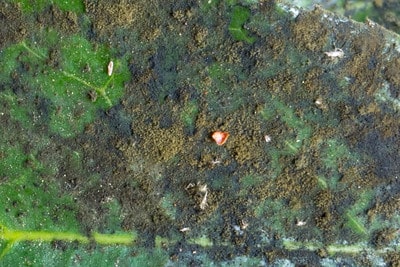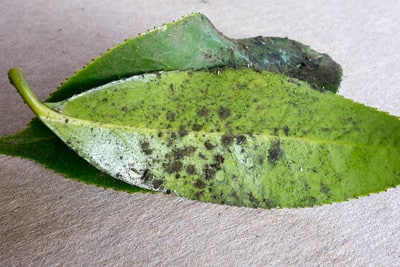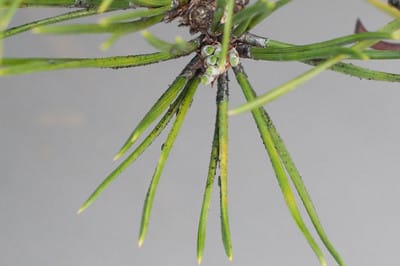You’ve likely seen it – that dirty, cruddy stuff in your garden, on street trees, and on your bonsai. It has a name – sooty mold.

Sooty mold on camellia
Although it can look creepy up close, it’s not among the more harmful garden pests. Sooty mold is fungus that grows on the honeydew secreted by aphids, scale or other insects that feed on sap.

Sooty mold close-up
While the mold itself is rarely a threat to bonsai, the insects that generate the honeydew are. On the plus side, if you can control the pests, you can control the sooty mold.

Sooty mold on the underside of a camellia leaf
What to do when you see sooty mold on bonsai?
- Find out what’s creating the honeydew
- If it’s coming from a garden tree overhead, consider moving the bonsai away from the infested tree
- If it’s coming from scale, aphids or other insects on the bonsai itself, treat those insects with insecticidal soap, oils, contact pesticides and/or systemic pesticides
- Make sure the bonsai is getting enough sunlight and is being watered properly

Sooty mold on pine foliage
If the leaves are sturdy enough, sooty mold can be wiped away. If this isn’t a good option because of leaf size (chojubai), shape (pine needles) or fragility (azalea), overhead watering – as long as the foliage doesn’t stay wet for too long – can help rinse the mold away.
Subscribe to Bonsai Tonight
New Posts Delivered Every Tuesday and Friday
polianthus says
my bonsais never live that long sadly..
Mark @ BonsaiDojo says
Looks like a case of treating the cause, not the symptom. If you notice the insects that secrete the honeydew, time to move your Bonsai away and treat it to make sure it doesn’t get any mould 🙂